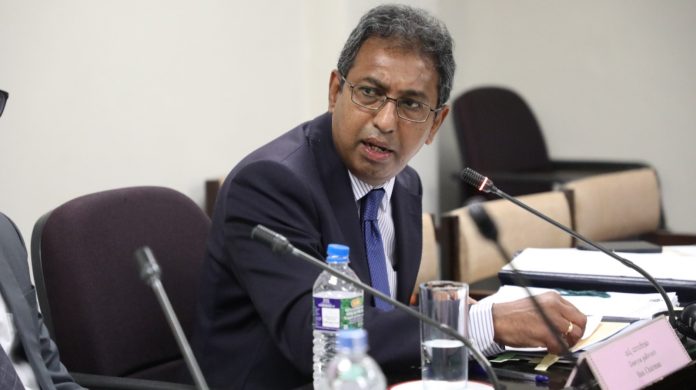[ad_1]
ECONOMYNEXT – State-run SriLankan Airlines has reported a net profit of 1,124 million rupees in the nine months to December 2023 turning around from a loss of 73.26 billion rupees for the full year ending March 2023, official data shows.
SriLankan had earned revenues of 248 billion rupees in the nine months to December, with 205.6 billion in passenger income and 22.6 billion rupees in freight and 18.7 billion in unspecified other incomes.
Operating costs were 223.8 billion rupees with 86.3 billion rupees spent on fuel, 22.09 billion on employees and another 6.7 billion listed as crew costs.
Earnings before interest and tax was 24.5 billion rupees for the nine months compared to 41.9 billion rupees last year.
Interest costs for the 9 months was 26.0 billion rupees against 51 billion rupees for the full last year.
In the year 22/23 the government had injected 102.5 billion rupees as equity to settle due to the Ceylon Petroleum Corporation dating from prior years.
The government had also given an 11.6 million dollar Treasury guarantee to the International Air Transport Association to support the airline’s cash flow problems.
Losses from bad money
In 2023 the airline reported a loss of 73.2 billion rupees, and in the previous year 165 billion rupees.
In the 2022/23 financial year there was a 38.2 billion rupee exchange loss on its dollar liabilities coming from central bank currency depreciation. A further 25.56 billion rupees was listed as “exchange loss on transactions”.
For the 2021/2022 years out of 165 billion rupees in losses 107.6 billion was from exchange losses on the balance sheet and 37.2 billion rupees from ‘exchange loss on transactions’.
It is not clear whether the loss on ‘transactions’ come from realized losses on the credit period for settling payments dollar denominated payments to suppliers or from other factors.
Anchor conflicting OF
Sri Lanka’s central bank has a deeply flawed operational framework involving targeting a domestic anchor while trying to collect foreign reserves which requires exchange rate intervention.
Money is printed to generate high levels of inflation of at least 5 percent (a domestic anchor).
Money is also printed to drive growth (close a potential output gap) in the belief that aggressive ‘macro-economic’ policy can push growth without working for it.
The combination led to serial currency crises especially after the end of a 30-year war, critics have said.
Sri Lanka’s macro-economist both in government and in think tanks have assiduously resisted any shift to a credible single anchor monetary anchor which can provide domestic stability, critics say.
Sri Lanka started to experience forex shortages shortly after the central bank was created in 1950 leading to an intensification of exchange controls.
However at the time the rupee was under a dual complementary external and species anchor and the currency retained its value as a unit of account, though its value as a medium of exchange for international transactions was lost leading to exchange and trade controls.
Inflationist macro-economists jettisoned the external anchor after 1977 as the International Monetary Fund also changed its articles leaving member central banks in a sea of uncertainty without a credible anchor.
In the 1980s Sri Lanka’s macro-economist played around targeting money supply without a floating regime, and the recent crises came by dabbling with inflation targeting without a clean float (trying to collect reserves), critics say.
Related Why the IMF is hated now and is backing bad money in Sri Lanka and Latin America
Out of 331.5 billion in losses of Sri Lankan Airlines in the previous four years, 240 billion rupees came from exchange losses.
In the nine months to December there was an exchange gain of 3.1 billion on the balance sheet and a loss of 603 million on ‘transactions’.
In recent months the central bank has allowed the exchange rate to appreciate amid deflationary monetary policy or reducing its domestic asset stock. (Colombo/June05/2024)
[ad_2]
Source link


